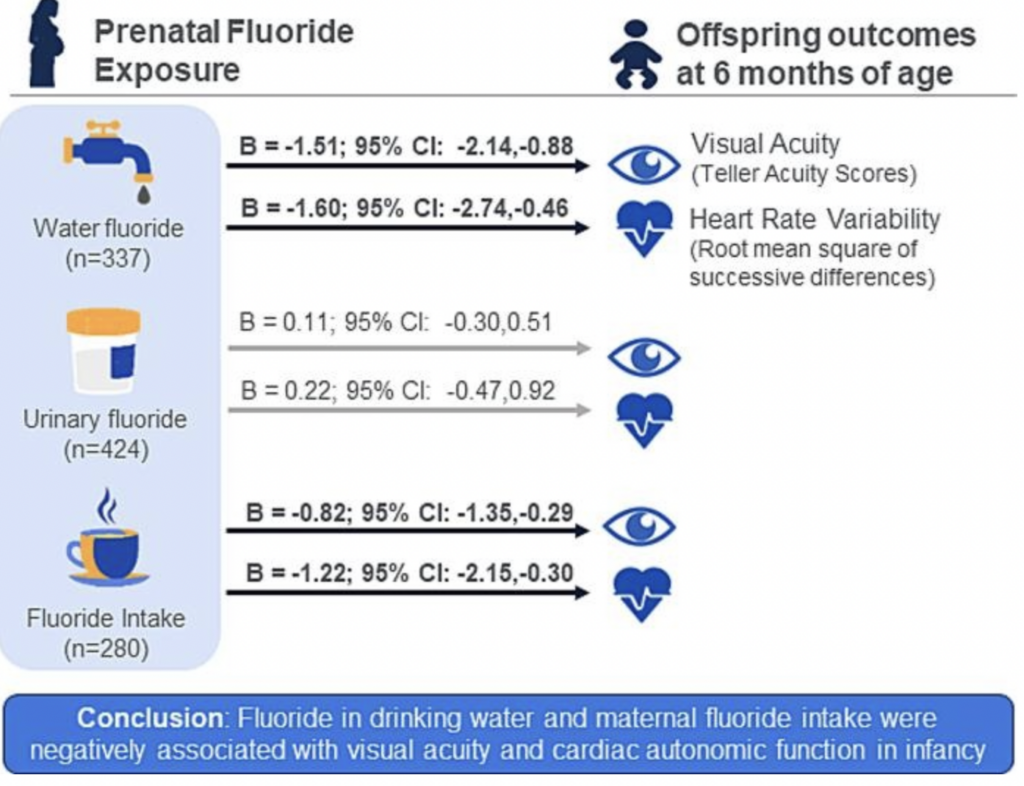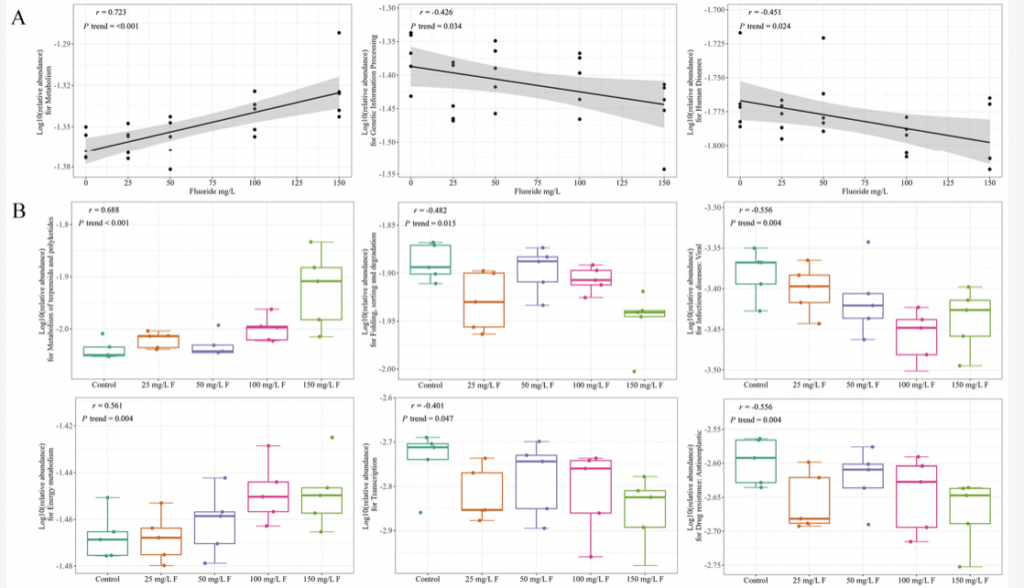Fundraising Update
Since Saturday, we’ve raised $1,355 from 19 supporters, bringing our current total to $14,380 from 99 donors towards FAN’s 2024 operating budget. THANK YOU ALL!
Please help FAN continue to share, promote, archive, and generate fluoridation news and research. Your support makes it possible to send out press releases to educate journalists, to have an email database to keep supporters informed, to produce informative videos, and to write regular newsletters featuring scientific analysis, advocacy alerts, news, and legal updates.
If you’ve found value in any of this work, please consider making a tax-deductible donation to our 2024 operating budget so we can continue to develop and improve upon these efforts. Click here to use our secure online donation page.
*If your browser cannot open our new fundraising page, click here.
You can also donate by check, payable to: Fluoride Action Network
Checks can be mailed to:
Fluoride Action Network
PO Box 85
North Sutton, NH 03260
Visual and Cardiac Developmental Effects Associated with Prenatal Fluoride Exposure

Further investigation of the Canadian Maternal-Infant Research on Environmental Chemicals (MIREC) cohort has found that prenatal fluoride exposure is associated with poorer visual acuity and heart rate variability (HRV) in 6-month-old infants.
The scientists from several universities across Canada examined markers of both central and peripheral nervous system development with the hope of expanding “understanding of the impact of prenatal fluoride exposure on offspring neurodevelopment beyond cognitive and behavioural outcomes,” they wrote in Environment International November 17.
“We found that higher levels of fluoride in drinking water during pregnancy were associated with lower infant visual acuity and risk for autonomic nervous system problems,” they report.
“Taken together, these results suggest that water fluoride levels and maternal fluoride intake may be associated with poorer central (visual acuity) and peripheral (cardiac ANS) markers of nervous system functioning in infant offspring. These results are novel given that prior human studies examining prenatal exposure to fluoride have only assessed offspring outcomes using measures of cognitive and behavioral development,” wrote the authors.
“Fluoride in drinking water was associated with reduced visual acuity and alterations in cardiac autonomic function in infancy, adding to the growing body of evidence suggesting fluoride’s developmental neurotoxicity,” conclude the authors.
They note that the association was found with drinking water fluoride levels but not with the mother’s urinary fluoride level, suggesting that the variability in the mother’s urine over time may be the reason.
“Previous studies have reported poorer visual acuity following prenatal exposure to a variety of neurotoxicants, including methylmercury, lead, chlorpyrifos, and organic solvents, reflecting the exquisite sensitivity of the developing visual system to early-life exposure to neurotoxicants,” they note.
Source: https://doi.org/10.1016/j.envint.2023.108336
German Investigators See High Risk of Bias in Fluoride Prophylaxis Recommendations

Dental investigators from several German universities, concerned over the disparity of recommendations for clinical use of fluoride prophylaxis between pediatricians and pediatric dentists, have investigated the basis for the clinical recommendations and found a high risk of bias in the underlying scientific reports.
Pediatricians are recommended to prescribe fluoride tablets, while pediatric dentists are told to promote low fluoride toothpastes, according to the authors.
“Guidelines providing clinical recommendations could, therefore, solve many controversies in the medical field, as they are or at least should be based on solid evidence of high quality.
Nevertheless, in many health-related issues, a wide variety of papers regarding the same matter may come to different conclusions. This may confuse the clinical practitioner and make the mission of developing guidelines more challenging,” wrote the authors.
To see how the recommendations were supported by the scientific literature, the authors analyzed the risk of bias in published reports.
“Out of 58 papers, 48.3% (n = 28) showed high risk of bias, with the majority in sections regarding fluoride tablets, fluoridated toothpaste, and pediatricians’ recommendations. 9 out of 20 recommendations and statements were based on studies with high risk of bias, all of which were in these three controversial sections. 13 out of 29 randomized control trials showed high risk of bias (44.8%), as all 13 non-randomized trials did, while only 2 of 16 (12.5%) systematic reviews had high risk of bias,” they report.
“Clinical guidelines should not be taken for granted, without a critical consideration of their methodology. It is essential to assess the risk of bias of cited papers before providing updates on clinical recommendations and guidelines that would likely affect clinical decisions of practitioners,” conclude the authors.
Source: https://doi.org/10.1007/s40368-023-00854-7
“Profound Shift in The Intestinal Microbial Composition Following Fluoride Exposure”

Using a molecular biological approach that identifies bacteria by their genetic sequences, researchers at Harbin University have documented that fluoride exposure greatly perturbs the normal community of gut-dwelling microbes and alters their metabolism.
“Metabolic activities within the gut microbiome are intimately linked to human health and disease, especially within the context of environmental exposure and its potential ramifications. Perturbations within this microbiome, termed “gut microbiome perturbations”, have emerged as plausible intermediaries in the onset or exacerbation of diseases following environmental chemical exposures, with fluoride being a compound of particular concern,” explain the authors on November 17 in the journal Metabolites.
“Our findings indicate a profound shift in the intestinal microbial composition following fluoride exposure, marked by a dose-dependent modulation in the abundance of key genera, including Pelagibacterium, Bilophila, Turicibacter, and Roseburia,” report the authors.
“The research demonstrates significant dose–response changes in the composition of the gut microbiome in rats due to fluoride exposure. Moreover, these disturbed intestinal bacteria are closely associated with alterations in many gut microbiota-related functions, indicating that fluoride exposure not only interferes with the bacterial abundance but also significantly alters the functional characteristics of the gut microbiota, leading to a disruption in the host’s homeostasis post exposure,” write the authors.
Their paper contains a detailed discussion of the types of bacteria in the gut and how perturbations of the gut bacterial community are associated with certain diseases.
“In essence, fluoride exposure not only perturbs the compositional equilibrium of the gut microbiota, but also instigates profound shifts in its metabolic landscape. These intricate alterations may provide a mechanistic foundation for understanding fluoride’s potential toxicological effects mediated via gut microbiome modulation,” conclude the authors.
Source: https://doi.org/10.3390/metabo13111159
New Detailed Metabolic Effects of Fluoride on Brain Reported

A profile of enzyme-use and metabolite data from the brains of fluoride-exposed mice has led scientists from the Northwest Normal University in China to conclude that low-dose fluoride administration in [parent mice] could effectively reduce the accumulation of neurotransmitters and related metabolites while inhibiting synaptic function and synaptic ion transport, having to do with the perpetuation of the nerve impulse between cells in a nerve.
Writing in Ecotoxicology and Environmental Safety on November 30th, these authors report “Synaptic vulnerability and neurotransmitter dysfunction correlated in a dose- and generation-dependent manner, while neurotransmitters such as acetylcholine and L-glutmate were less accumulated in [treated animals] compared to [control animals] in metabolomics profiling.”
The scientists sought to expand previous research on fluoride’s neurotoxic effects by using an approach that can detect the enzymes produced, metabolites accumulated, and genes activated within the brain as a result of fluoride exposure.
“Numerous studies have demonstrated the developmental neurotoxicity of fluoride, especially during the perinatal period, when fluoride can enter the brain of the offspring through the placental barrier and the blood-brain barrier, thereby causing irreversible damage to the developing nervous system,” note the authors.
“Fluoride exposure during pregnancy and lactation may cause neurodevelopmental disorders in the offspring mice, including abnormal expression of genes related to synaptic function and neurotransmitters’ accumulation; the magnitude and spectrum of response to fluoride exposure in parents and offspring are significantly different,” they conclude.
Source: https://doi.org/10.1016/j.ecoenv.2023.115752
New York Doctor Lists Fluoride as a Possible Contributor to Dementia

In a video posted on his blog October 27, New York surgeon Dr. Steven Y. Park lists lowering fluoride exposure as one of 10 ways one can avoid dementia.
Author of the book Sleep, Interrupted, Park presents a selection of lifestyle choices and toxic exposures that cause dementia. These are: 1. Poor sleep/obstructive sleep apnea, 2. Obesity/metabolic dysfunction, 3. Certain medications, 4. Low vitamin D, 5. Fluoride, 6. Aluminum, 7. Mercury, 8. Head trauma, 9. Lack of Social Networks & Relationships, 10. General Anesthesia.
His blog site also includes links to a long list of references, including many related to fluoride exposure.
Source: https://doctorstevenpark.com/10-ways-you-can-prevent-dementia-an-ent-surgeons-perspective
•• Michael Dolan can be contacted at <mdolan.ecsn@outlook.com>
•• The archives of The Fluoridation Review are available at: https://
